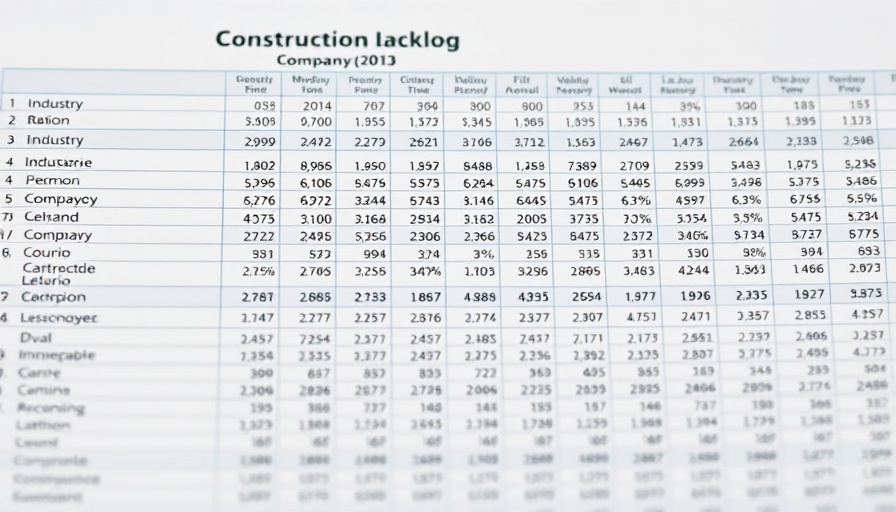
Contractor Backlog Increases: What Does It Mean for the Industry?
The ABC (Associated Builders and Contractors) recently reported an increase in contractor backlog for June, a harbinger of potential growth amidst fluctuating market conditions. For clients of commercial construction companies, understanding the implications of increasing backlogs can be vital for project efficiency, cost management, and achieving quality outcomes.
Understanding the Backlog Outlook
According to the ABC survey, backlog increased to an average of 9.1 months in June, showing a steady rise attributed to demand exceeding supply in certain sectors. With more contractors secured to handle projects, this backlog suggests stability within the construction industry, but clients should be aware of how this affects project timelines and costs.
Long-Term Implications and Industry Trends
This rise in backlog indicates a shift in the market dynamics, suggesting that construction firms are navigating through labor shortages and resource constraints. Clients may have longer wait times for project starts, emphasizing the need to plan accordingly and manage expectations. The backlog growth also highlights opportunities for construction firms to invest in innovations like automation and smart technologies that enhance operational efficiencies.
Navigating Challenges with Innovative Strategies
As the construction industry evolves, it’s crucial for clients to partner with companies that embrace cutting-edge technology to mitigate delays and optimize project outputs. Utilizing tools such as Building Information Modeling (BIM), enhances collaboration and accelerates project management effectiveness—making the contractor backlog less burdensome.
Conclusion: Strategize for a Changing Landscape
As we move forward, clients are encouraged to explore how increasing contractor backlog may affect their projects. While this indicates a healthy industry, the accompanying risks of longer timelines need to be managed. Consider discussing forecasted timelines and innovative strategies with your contractor to ensure your project stays on track. Remember, preparation is key to navigating a dynamic construction landscape!
 Add Row
Add Row  Add
Add 




Write A Comment